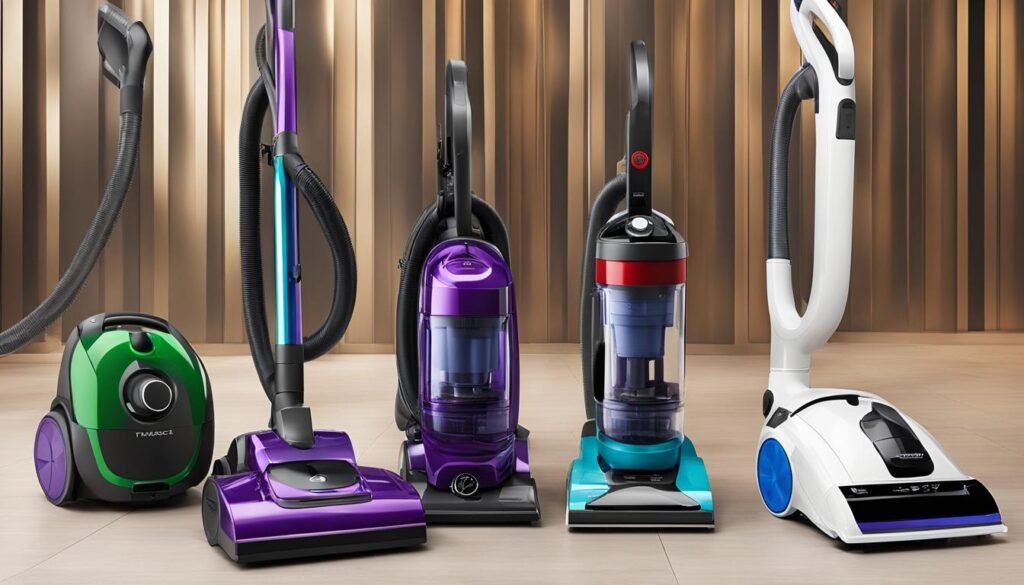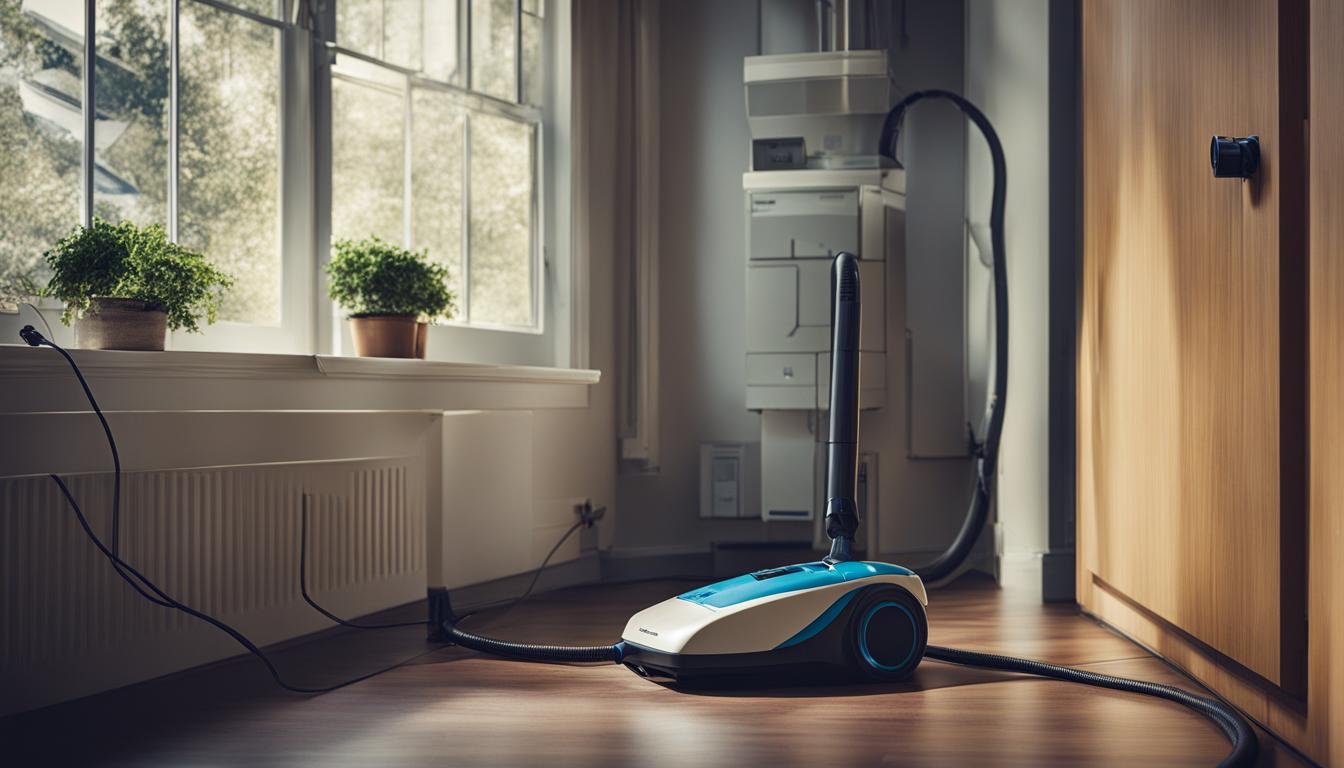Hello, everyone! Today, I want to dive into the fascinating world of vacuum cleaners and explore one key question: where does the electricity to power a vacuum cleaner come from? Whether you have a handheld vacuum for quick clean-ups or a robust upright vacuum for deep cleaning, understanding the origin of the electricity that fuels these essential cleaning devices is essential.
Vacuum cleaners rely on electric power to create the suction that effectively removes dirt and debris from various surfaces. So, where does this electric power come from? The answer is simple: an electrical supply. Vacuum cleaners can be plugged into a power outlet to draw electricity directly or be powered by a rechargeable battery.
To help you gain a better understanding of this topic, I’ll be sharing some key insights into the invention and evolution of vacuum cleaners, as well as the power ratings and performance factors you should consider when choosing one. But first, let’s take a look at the early days of vacuum cleaner technology and how it has evolved over time.
Key Takeaways:
- Vacuum cleaners rely on electricity to create the necessary suction for effective cleaning.
- The electricity to power vacuum cleaners comes from an electrical supply – either a power outlet or a rechargeable battery.
- Understanding the source of electricity is essential when choosing a vacuum cleaner.
- Stay tuned to learn more about the invention and evolution of vacuum cleaners, as well as power ratings and performance factors to consider.
- Knowing the origin of electricity and understanding performance capabilities can help you make an informed decision when purchasing a new vacuum cleaner.
The Invention and Evolution of Vacuum Cleaners
The vacuum cleaner has come a long way since its humble beginnings in the 19th century. The invention of this cleaning marvel revolutionized household chores and set the stage for a remarkable evolution in cleaning technology.
In 1860, Daniel Hess, an American inventor, introduced the first manual vacuum cleaner known as the carpet sweeper. This early model utilized a rotating brush to gather dust and debris, making cleaning more efficient than ever before.
As the demand for more powerful cleaning solutions grew, powered vacuum cleaners emerged in the late 19th century. However, these early models relied on blowing air instead of suction to clean surfaces. It wasn’t until 1901 that the true suction-powered vacuum cleaner was invented independently by two inventors.
“British engineer Hubert Cecil Booth and American inventor David T. Kenney made groundbreaking contributions to the world of cleaning. Booth’s invention was the first to be called a ‘vacuum cleaner,’ and it quickly gained popularity for its exceptional suction power.”
The invention of portable electric vacuum cleaners in the early 20th century made this cleaning marvel accessible to the masses. With the convenience of electricity, vacuum cleaners became an essential appliance in households worldwide.
Understanding Power Ratings and Performance of Vacuum Cleaners
The power rating of a vacuum cleaner plays a crucial role in determining its performance. In the past, vacuum cleaners were typically rated in Peak Horse Power (PHP) or amperage, but more recently, wattage ratings and Air Watts have become the standard.
“The power rating of a vacuum cleaner is a key factor in its ability to effectively clean different surfaces.”
Amperage ratings indicate the maximum amount of electrical current flowing through the vacuum cleaner. A higher amperage rating suggests greater suction power. On the other hand, wattage ratings measure the input power of the motor. Higher wattage indicates a more powerful motor, which can enhance the cleaning performance of the vacuum cleaner.
Air Watts are widely used to evaluate the output power of vacuum cleaners. It takes into account both the suction power and the airflow to provide a more comprehensive measure of performance. Air Watts offer a more accurate representation of a vacuum cleaner’s ability to pick up dirt and debris efficiently.
Sealed Suction and Air Flow
Sealed suction is another important performance factor that measures the efficiency of the suction motor. It is typically measured in inches of water lift. The higher the inches of water lift, the stronger the suction power, enabling the vacuum cleaner to effectively capture dirt and dust from different surfaces.
Air flow is measured in cubic feet per minute (CFM) and indicates the volume of air that the vacuum cleaner can move in one minute. Higher air flow ensures that the vacuum cleaner can pick up and remove dirt quickly, providing efficient cleaning results.
Understanding power ratings, sealed suction, and air flow is essential for consumers to make informed decisions when selecting a vacuum cleaner that suits their specific cleaning needs. By considering these factors, users can ensure that they choose a vacuum cleaner with adequate power and performance capabilities for their home or commercial use.
| Performance Factors | Measurement |
|---|---|
| Amperage | Measurement of electrical current flowing through the vacuum cleaner |
| Wattage | Measurement of input power of the motor |
| Air Watts | Measurement of output power of the vacuum cleaner, considering suction power and airflow |
| Sealed Suction | Measurement of the efficiency of the suction motor in inches of water lift |
| Air Flow | Measurement of the volume of air the vacuum cleaner can move in cubic feet per minute (CFM) |
Combining these performance factors can help users find the optimal vacuum cleaner that delivers both power and performance, ensuring thorough and effective cleaning results.

Conclusion
In conclusion, the power source of a vacuum cleaner can be either an electrical supply from a power outlet or a rechargeable battery. With advancements in technology and design, vacuum cleaners have significantly evolved since their invention. When choosing a vacuum cleaner, it is crucial to consider various performance factors and power ratings to ensure optimal cleaning efficiency.
Factors like amperage, wattage, and Air Watts can help determine the power output and suction capabilities of a vacuum cleaner. Sealed suction, measured in inches of water lift, indicates how efficiently the vacuum can lift dirt and debris. Additionally, air flow, measured in cubic feet per minute (CFM), is essential for effective dirt pickup.
By understanding the power source and performance capabilities of vacuum cleaners, consumers can make informed decisions when selecting the right vacuum cleaner for their specific needs. Whether it’s for small daily cleaning tasks or heavy-duty cleaning, considering power ratings, sealed suction, air flow, and overall performance will ensure a more satisfying cleaning experience. Choose wisely and enjoy a cleaner and healthier home!
FAQ
Where does the electricity to power a vacuum cleaner come from?
The electricity to power a vacuum cleaner comes from an electrical supply, either from a power outlet or a rechargeable battery.
What is the origin of electricity for vacuum cleaners?
Vacuum cleaners are powered by electricity sourced from an electrical supply. This can be from a power outlet or a rechargeable battery.
How are vacuum cleaners powered?
Vacuum cleaners are powered by electricity. They can be plugged into a power outlet or run on rechargeable batteries.
Can vacuum cleaners be powered by batteries?
Yes, vacuum cleaners can be powered by rechargeable batteries. This provides the convenience of cordless operation.
Are there different types of vacuum cleaners based on their power source?
Yes, vacuum cleaners come in different models based on their power sources. There are corded vacuum cleaners that plug into an electrical outlet, as well as cordless vacuum cleaners that are powered by rechargeable batteries.
Can I use a vacuum cleaner without electricity?
No, vacuum cleaners require electricity to operate. They rely on electrical power to generate suction and remove dirt from surfaces.





Leave a Reply